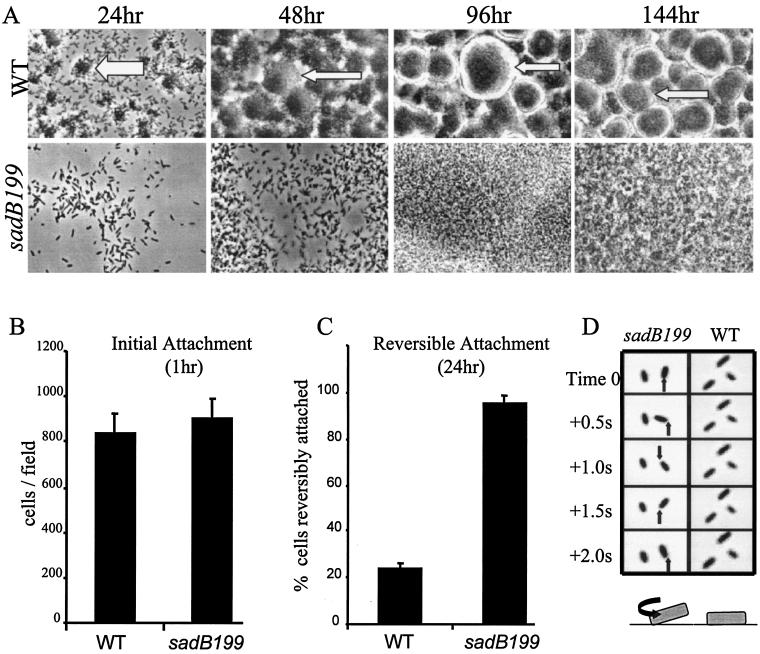FIG. 2.
Biofilm formation phenotypes under constant flow conditions. (A) The wild type and the sadB199 mutant were inoculated into flow cells fed with minimal salts EPRI medium supplemented with glucose as the carbon source. Images shown are top-down, phase-contrast micrographs (magnification, ×1,260) recorded over the course of 6 days. At an early time point (24 h), the dark regions (shown by the white arrow) in the wild-type biofilm indicate microcolonies and the gray regions represent the glass surface of the flow chamber. At later time points (48 h and beyond), wild-type macrocolonies are the dark regions surrounded by refractory light-colored halos (indicated by the narrow white arrows). The borders of macrocolonies coincide with these light halos. The glass surface of the chamber cannot be seen in the mature wild-type biofilm (96 and 144 h). The sadB199 mutant biofilm lacks colonial architecture at all time points, and only single cells can be observed on the glass surface at early time points. (B) Quantification of initial attachment of the wild type and the sadB199 mutant to the glass surface of the flow chamber (1 h). (C) Quantification of reversible attachment of the wild type and the sadB199 mutant at 24 h by time-lapse video microscopy. The percentage of reversibly attached cells is shown. See the supplemental data at www.dartmouth.edu/∼gotoole/sadBmovies.html for movies of the reversible attachment phenotype. (D) Image series of initial attachment events. Phase-contrast images were recorded after 24 h of flow cell growth. The black arrow points to the fixed cell pole about which the sadB199 mutant is rotating. The wild-type cells are attached by the long axis of the cell body and do not move over the course of this image series, behaviors typical of irreversible attachment. Below each time course is a cartoon rendition of reversible and irreversible attachment. The black arrow denotes the direction of rotation of the reversibly attached sadB199 mutant bacterium seen in the above micrographs. WT, wild type.

